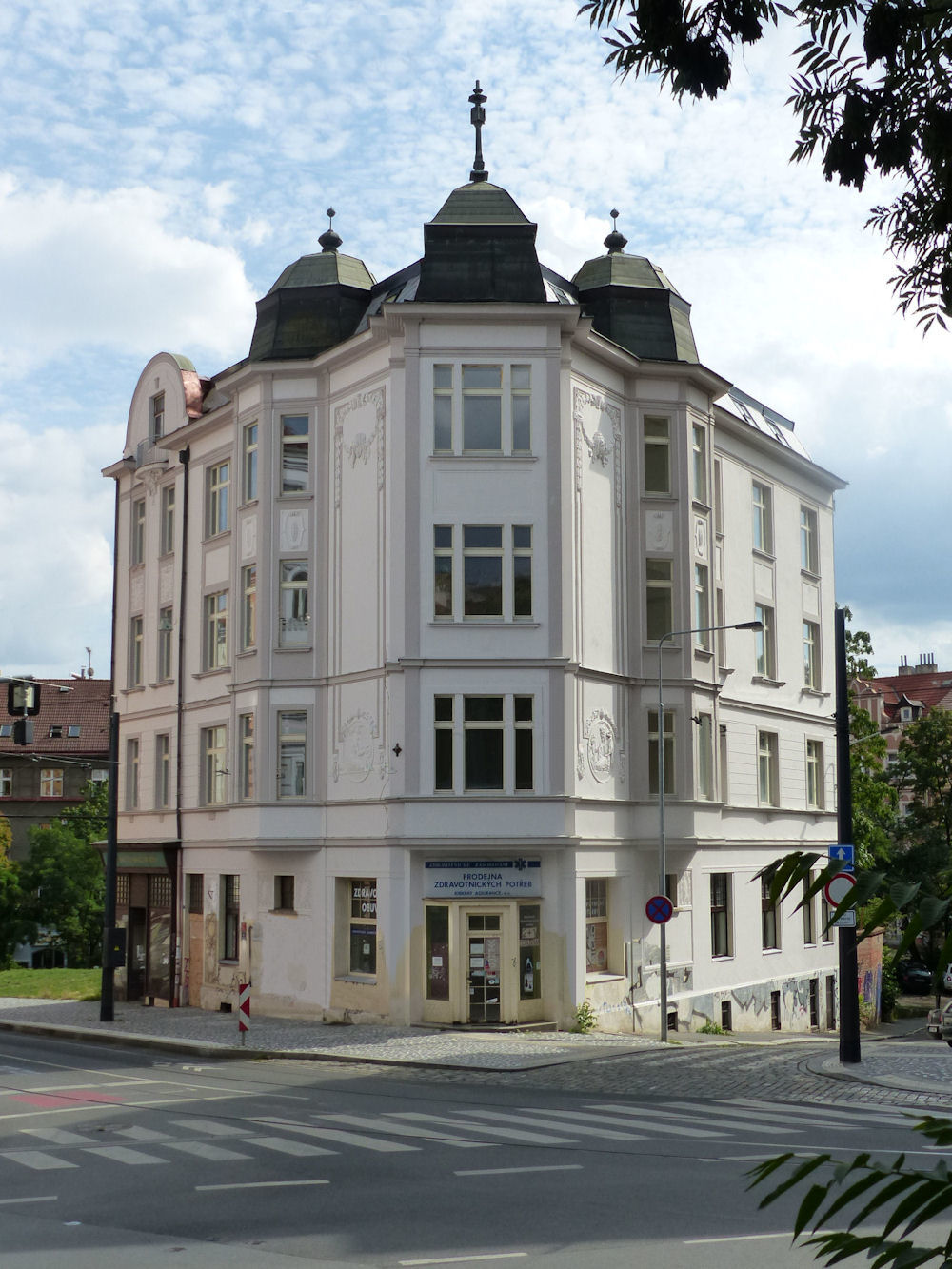Moskevská 77/4
Of the many celebrated Czech architects of the first decade of the twentieth century, perhaps the most prolific was the Austrian-born Osvald Polívka. Best known for civic projects such as Prague’s new City Hall (1911) and Municipal House (1912), he was also responsible for any number of banks and commercial buildings.
But Polívka also turned his hand to residential blocks such as this finely articulated corner house, constructed between 1909 and 1910 on the corner of Palackého street (today’s Moskevská) in the suburb of Vršovice.
Currently undergoing extensive refurbishment, the house is notable for its decorative dormer roof, and two beautifully-crafted art-nouveau medallions depicting Asklepios and Hygeia. This classical pair represent the attributes, respectively, of medicine and pharmacy. On the north-facing wall, Asklepios, god of medicine, holds a rod entwined with a snake; to the east, Hygeia holds a bowl from which a serpent sips. Appropriately enough, the ground floor of the building is home to a medical goods supplier.
Asklepios, holding his serpent-entwined staff, picks medicinal plants









